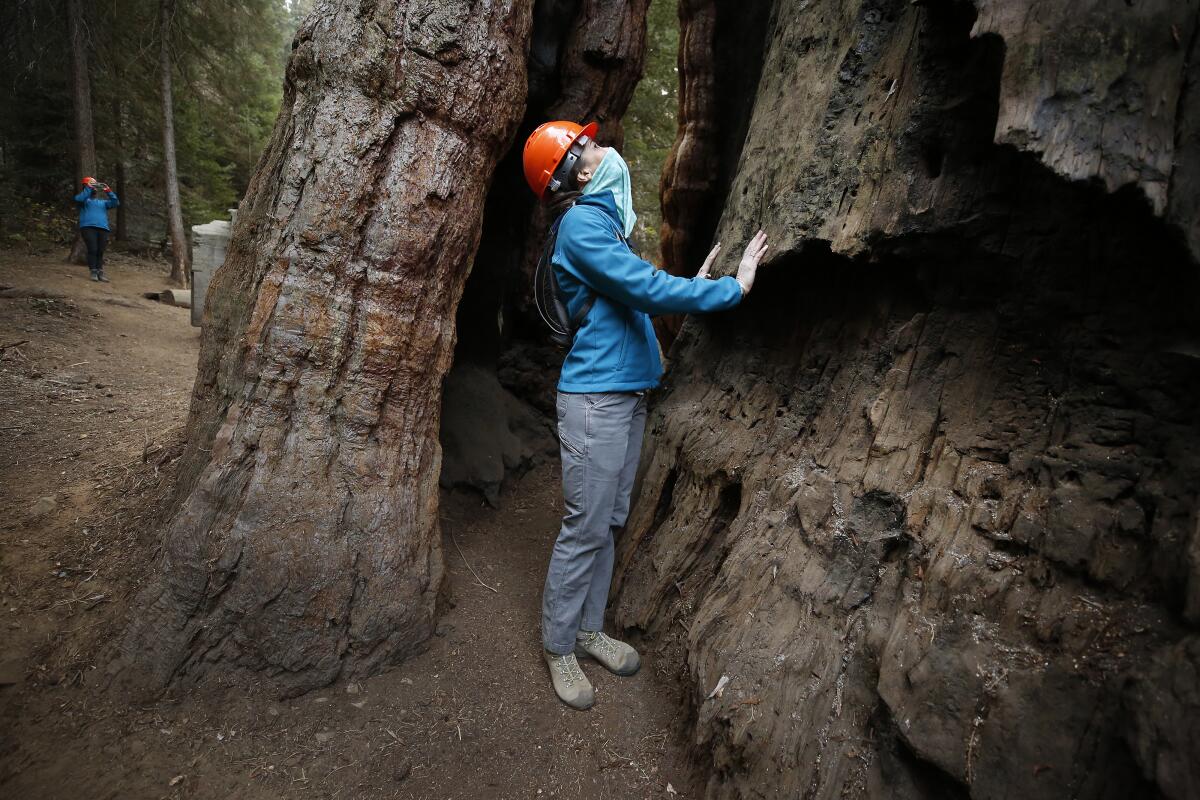Letters to the Editor: Climate change has finally come for ancient Sequoia trees. That’s devastating

- Share via
To the editor: Sequoia National Forest and the Giant Sequoia National Monument are some of the most beautiful places I’ve had the pleasure to visit. Now, mega-wildfires are killing the area’s namesake trees.
This is a tragic example of the damage to our environment caused in some part by climate change. Higher temperatures and more severe droughts allow our fire season to last longer and produce more intense burns. Our state is made poorer when we lose these magnificent and ancient trees, which have awed many of us.
We need to get serious about reducing our carbon dioxide emissions and fighting climate change. I cry for these breathtaking trees.
Maggie Wineburgh-Freed, Los Angeles
..
To the editor: It was heartbreaking to read about how many of our centuries-old giant Sequoias were killed in the Castle fire in the Sierra Nevada this year.
The National Park Service has learned from experience that the best way to prevent such destruction is to do more controlled burns, so that should be a top priority for the incoming Biden administration. It would be cheaper to pay for reforestation, thinning and prescribed fire on the front end than to pay to repair the damage on the back end.
Citizens should support this choice. The unpleasant smoke problem with controlled burns is only a temporary inconvenience; smoke from megafires is deadly and long-lasting.
Reforestation and proper care of our living forests is one of the best ways to draw carbon from the atmosphere and slow global heating. Simply put, we must do it.
Cher Gilmore, Newhall
..
To the editor: The 3,000-year-old redwood tree named Stagg is the imperiled avatar of California’s natural endowment. It and its arboreal neighbors are the largest living single-stem plants on Earth.
Your article holds that mega-wildfires are the great bane of these forest titans. However, the warming climate behind these epic burns is the true “giant killer.”
Contain the warming by substantially reducing carbon emissions, and we’ll have a chance to return to normal cycles of noncatastrophic wildfires. No amount of thinning of foliage — or fuel — will lead to a massive reduction in mega infernos.
Northern California’s wine country, not known for forests or combustible foliage, has recently suffered from mega-burns because of global warming. Saving the venerable Stagg tree requires dramatically cutting carbon emissions.
Tom Osborne, Laguna Beach
More to Read
A cure for the common opinion
Get thought-provoking perspectives with our weekly newsletter.
You may occasionally receive promotional content from the Los Angeles Times.










